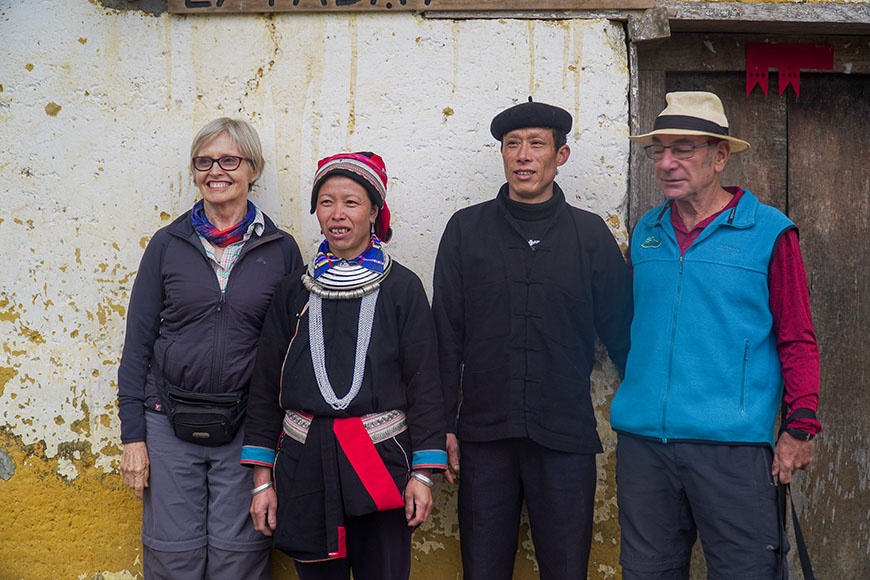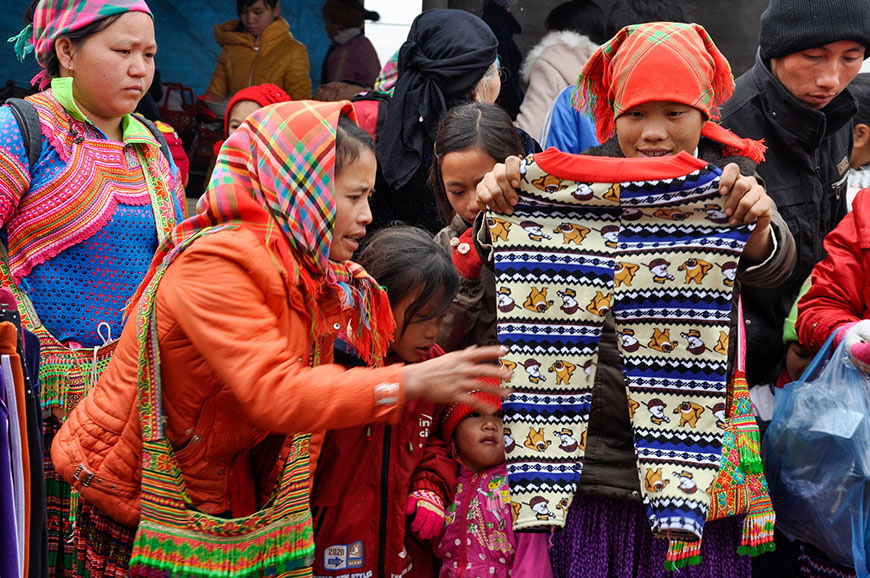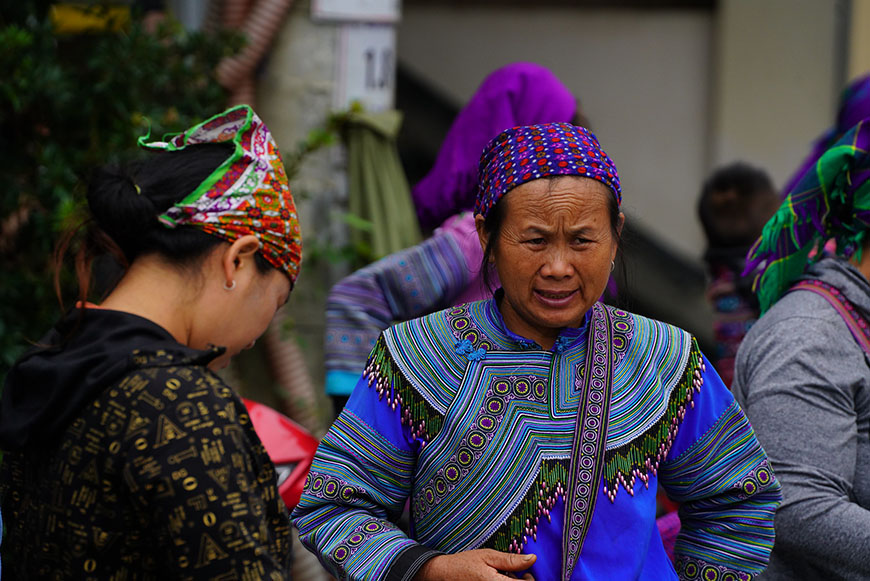Beyond its breathtaking landscapes, Northern Vietnam reveals itself as a true crossroads of cultures, where ethnic diversity flourishes with singular richness and vitality. More than 50 minority groups reside there, each weaving its own story into the grand tapestry of Vietnamese identity, perpetuating ancestral traditions at the rhythm of daily life. For the traveler in search of authenticity, this region offers a unique opportunity to experience profound cultural encounters and share privileged moments with communities whose heritage is preserved.
To meet these peoples is to open oneself to a world of traditions, colors, and ancestral know-how, for an unforgettable human immersion. And certainly, to encounter oneself.
Encounters and ways of life
In Vietnam, the term "ethnic minority" refers to the 53 groups distinct from the Kinh majority, which represents about 85% of the national population. The remaining 15% consists of these communities, each contributing significantly to the richness of Vietnamese identity. Among this diversity, five groups particularly stand out in Northern Vietnam: the Hmong, the Dao, the Tay, the Nung, and the Thai.
The Hmong people
The Hmong, originally from China and present in the region for several centuries, live mainly in the mountains where they practice terrace agriculture. Their colorful and embroidered clothing is a unique expression of their plural culture.
The Dao people
The Dao, also from China several centuries ago, are known for their embroidery and sewing work, their distinctive traditional clothing, and their knowledge of medicinal plants. They possess a rich oral tradition and rites blending Taoism and animism.
The Tay people
The Tay, the largest minority group in Vietnam, are farmers living in stilt houses. Their society is matrilineal.
The Nung people
The Nung, migrants from southern China, are skilled in terrace agriculture and handicrafts. Their clothing is relatively simple, often solid-colored, with indigo as the main color, and there is little or no embroidery or decoration. Their alternating chant called "sli" is famous to the point of being recognized as a national intangible heritage.
The Thai people
The Thai, present in Vietnam for a long time, are divided into White Thai and Black Thai. They are known for their stilt houses, their "xoe" dances, and their "then" poetry.
 The magic of encounters at the edge of the world - Mr Linh's Adventures
The magic of encounters at the edge of the world - Mr Linh's AdventuresCultural sharing and traditions
The Sapa region and the province of Lao Cai are major convergence points for several ethnic groups, notably the Hmong, the Dao, the Tay, the Giay, and the Xa Pho. Sapa, a popular tourist destination, is famous for its mountain tribes, including the Hmong, the Zao (Dao), and the Tay. The famous Bac Ha Sunday market is a lively place where one can admire these groups in traditional costumes. But exploring the ethnic villages around Sapa offers a more intimate and authentic experience. Although Sapa is experiencing rapid development, it offers a diversity of experiences, from lively markets to more peaceful village encounters, thus meeting the preferences of different travelers.
At the northern tip of the country, on the border with China, the
province of Ha Giang, with its spectacular mountainous landscapes, is also home to a diversity of minorities, notably the Hmong, the Dao, the Tay, and the Lo Lo. The Dong Van Karst Plateau, which delimits the southern part of Ha Giang, is a
UNESCO Global Geopark. It is a formidable playground for trekking and visits to remote villages.
The
province of Cao Bang, known for its limestone mountain peaks, is home to the Tay and Nung local communities. While traversing the region, one can admire limestone mountain peaks and meet women from the Dao ethnic minority. Ban Gioc Waterfall is an unmissable natural attraction of the region, and exploring the artisanal villages and local markets offers opportunities for enriching cultural encounters.
Ba Be National Park (Bac Kan province) is mainly home to the Tay minority, with villages like Pac Ngoi located on the edge of the lake. Ba Be Lake and its surroundings offer a unique combination of natural beauty and cultural encounters with the Tay people, but also the H'mong and Dao.
Mai Chau and the province of Hoa Binh, located in a valley southwest of Hanoi, are the home of the White Thai and Black Thai communities. Staying in traditional stilt houses with a homestay offers an immersive experience, allowing one to discover up close the rice culture and local traditions.
 Somewhere in a local Upper Tonkin market - Mr Linh's Adventures
Somewhere in a local Upper Tonkin market - Mr Linh's AdventuresThe cornerstones of responsible and respectful travel
Tourism can represent a double-edged sword for ethnic minorities, bringing potential economic benefits but also involving risks of cultural commodification and exploitation. It is therefore essential to adopt a respectful and ethical approach in all interactions. Respect for local customs is fundamental. Inquiring and adopting a sensitive and respectful attitude towards local traditions is essential. Modest attire, especially when visiting villages and religious sites, is a sign of consideration. The practice of removing shoes before entering a house is common and appreciated. Learning a few basic phrases in the local language, such as "hello" and "thank you," demonstrates your respect and facilitates connection.
Regarding photography, it is imperative to always ask permission before photographing people. It is important to be sensitive and avoid treating people as exhibits. Remember that visiting mountain tribes is not a safari; these are communities going about their daily lives. Offering to share the photos taken can be a welcome gesture.
Finally, fostering respectful interaction implies showing a sincere interest in the local culture and being open to sharing one's own culture in a reciprocal manner. Patience and understanding of cultural differences are essential for harmonious exchanges. Considering cultural exchange as a two-way street, where visitors and locals can learn from each other, fosters more meaningful connections. To facilitate these exchanges, traveling with an accredited local guide is almost indispensable, serving as a bridge between cultures. It is also crucial to support local economies through responsible purchases, so that tourism benefits the entire community.
Choosing your local operator wisely: A guarantee of authenticity
Opting for local and responsible tour operators considerably enriches the authenticity and ethical impact of your trip. These operators possess in-depth knowledge of the region and local cultures, and maintain established relationships with the communities, thus ensuring respectful access. By choosing a local operator, you contribute directly to the local economy and community development, as they ensure that a portion of your fees is donated to local initiatives. You will thus benefit from more authentic experiences, less focused on consumption and further off the beaten path. The rise of social enterprises in tourism also offers travelers the opportunity to directly support community development and cultural preservation.
 Remember to always ask permission before photographing people - Mr Linh's Adventures
Remember to always ask permission before photographing people - Mr Linh's AdventuresAn invitation to encounter and share
A trip to Northern Vietnam is an invitation to discover a world where cultural richness is measured by the yardstick of human encounters. Each smile exchanged, each gesture shared, each tradition unveiled weaves the tale of an authentic and memorable adventure. Far more than a simple visit, it is an immersion in the heart of humanity, an experience that marks the mind and enriches the heart.
So, let yourself be carried away by curiosity, open yourself to the unknown,
and prepare to experience moments of rare intensity.